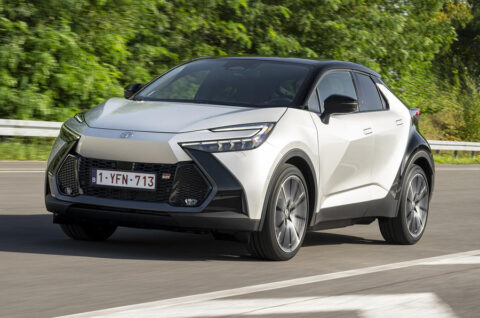
If you’re an adult who might spend a significant amount of time in the back of a C-HR, that could set some warning lights flashing: as before, rear leg room is far from the best and that sloping roofline cuts into the head room.
Still, that didn’t exactly put off buyers before, and for those with young families it will be less of an issue. Besides, Toyota now offers the slightly larger Corolla Cross in Europe (although not in the UK) for those who want to trade some style for some space.
Engineers have also made efforts to improve the feeling of space in the back: there’s a new tinted panoramic roof that doesn’t need a shade (adding 30mm of head room) and new window cut-outs in the C-pillar are designed to improve the views out.
On the subject of those C-pillars, you’ll no longer find the rear door handles hidden in them. Following feedback from customers, they’re now in a far more traditional position on the rear doors, although all the handles now sit flush to the bodywork and pop out when you push them in.
The boot remains on the small side, mind you – although Toyota has yet to give a capacity, or how much of it is lost in the PHEV version due to various electric gubbins underneath the floor.
In the front of the cabin, Toyota set out to improve the perceived quality, and it definitely feels a step up from the original C-HR.
There’s a new 12.3in digital dial display and a new touchscreen (8.0in as standard or 12.3in on pricier models, like ours) running Toyota’s latest infotainment system, while enough physical controls remain for the key functions to keep most people happy.
The driver’s seating position is quite high, as you would expect in a crossover, and visibility is good all round. The various grades of seats all feature recycled materials, and those in our test car were certainly comfortable enough.
